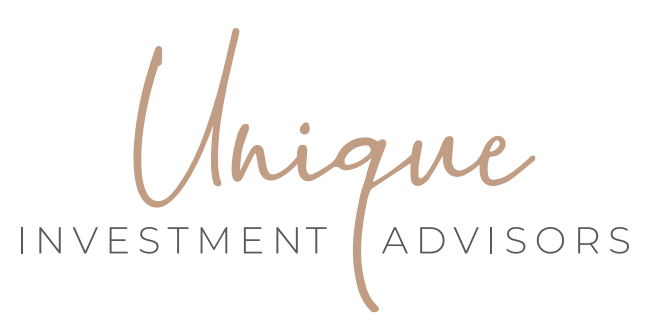Exploring the World of Premium Financing Life Insurance
Life insurance is a crucial financial tool that provides security and protection for loved ones in the event of the policyholder’s death. However, for high-net-worth individuals, the cost of substantial life insurance policies can be significant. This is where premium financing comes into play. Premium financing is a strategy that allows wealthy individuals to secure large life insurance policies without the need for immediate out-of-pocket expenses. We take a look at the concept of premium financing life insurance, its advantages/disadvantages, and how it can unlock valuable benefits for policyholders.
Understanding Premium Financing:
Premium finance is a specialized strategy that enables individuals to fund their life insurance premiums through loans from financial institutions or private lenders. Instead of paying the premiums directly, the policyholder borrows the necessary funds and uses them to cover the cost of the insurance policy. The borrowed amount, along with any accrued interest, is repaid over time, typically using the death benefit of the life insurance policy itself. They are commonly set up as universal life insurance polices.
Advantages of Premium Financing Life Insurance:
1. Enhanced Policy Coverage: Premium financing allows individuals to secure larger life insurance policies than they would otherwise want to afford. This can be particularly beneficial for high-net-worth individuals who require substantial coverage to protect their assets and provide for their loved ones. By leveraging premium financing, policyholders can access the necessary funds to obtain the desired policy without depleting their liquidity or affecting their cash flow.
2. Preserving Wealth and Liquidity: Premium financing helps individuals preserve their wealth and maintain liquidity. Rather than tying up a significant portion of their assets to pay for life insurance premiums, policyholders can use the borrowed funds for other investments or personal financial goals. This liquidity allows them to seize investment opportunities, address short-term financial needs, or maintain their lifestyle while still enjoying the benefits of a robust life insurance policy.
3. Tax Efficiency: Premium financing can offer tax advantages for policyholders. The interest paid on the premium financing loan may be tax-deductible in certain circumstances, reducing the overall cost of borrowing. Additionally, the death benefit received by the policyholder’s beneficiaries is generally tax-free. This tax efficiency can provide significant savings and optimize the financial benefits of the life insurance policy. Withdrawals are potentially tax-free when taken in the form of a policy loan.
4. Wealth Transfer and Estate Planning: Premium financing can be a powerful tool for wealth transfer and estate planning. Policyholders can use the proceeds from the life insurance policy to pay off the loan used for premium financing, ensuring that their beneficiaries receive the full death benefit. This strategy allows individuals to pass on wealth to future generations, provide for charitable causes, or address estate tax obligations, effectively managing their legacy and ensuring a smooth transition of assets.
5. Flexibility and Control: Premium financing offers flexibility and control over the life insurance policy. Policyholders have the ability to choose the type of policy that best suits their needs, whether it’s term life insurance, permanent life insurance, or a combination of both. They also have control over the investment of their borrowed funds, potentially generating additional returns to offset borrowing costs. This flexibility allows policyholders to tailor their life insurance strategy to align with their unique financial goals and circumstances.
6. Access to Professional Expertise: Premium financing often involves collaboration with financial professionals, including insurance advisors, estate planners, and lenders. Working with these experts can provide policyholders with valuable guidance and support throughout the premium financing process. These professionals can help assess the feasibility of premium financing, identify suitable lenders, navigate complex insurance policies, and ensure that the strategy aligns with the policyholder’s overall financial objectives.
Considerations and Risks:
While premium financing offers numerous benefits, it is important to consider the associated risks and potential drawbacks. The borrowed funds must be repaid, and policyholders should carefully evaluate their ability to meet the repayment obligations, including interest costs.
Additionally, the performance of the underlying life insurance policy and its investment component can impact the success of premium financing. If the policy’s performance falls short of expectations, it may result in a shortfall in the policy’s cash value to cover the loan repayment, potentially leading to additional out-of-pocket expenses for the policyholder.
Moreover, changes in interest rates can affect the cost of borrowing. If interest rates rise significantly, it could result in higher borrowing costs and potentially impact the financial feasibility of the premium financing arrangement. Policyholders need to carefully assess the potential impact of interest rate fluctuations and consider the long-term sustainability of the financing structure.
Another consideration is the potential impact on the policyholder’s creditworthiness. Premium financing typically involves a loan, and this debt obligation may affect the policyholder’s credit profile. It’s crucial to evaluate the potential implications on other financial transactions or borrowing opportunities that may arise in the future.
Furthermore, premium financing may not be suitable for everyone. It is a strategy primarily geared towards very high-net-worth individuals who have significant assets and cash flow to support the borrowing and repayment obligations. Individuals should thoroughly assess their financial situation, long-term goals, and risk tolerance before pursuing premium financing. However, there are new updated products, most notably the Kai-Zen plan, that addresses many of these potential drawbacks.
Policyholders should also carefully review the terms and conditions of the premium financing arrangement, including the interest rate, loan duration, repayment structure, and potential penalties or fees. It’s essential to work with reputable lenders and financial professionals who specialize in premium financing to ensure transparency, clarity, and favorable terms.
To conclude, premium financing life insurance can offer substantial benefits for high-net-worth individuals seeking enhanced coverage while preserving liquidity and wealth. It can provide access to larger life insurance policies, tax advantages, flexibility, and control over the policy. However, it is crucial to carefully consider the risks and potential drawbacks associated with premium financing, such as repayment obligations, policy performance, interest rate fluctuations, credit implications, and suitability for individual financial circumstances. Engaging with knowledgeable professionals and conducting thorough due diligence is essential to make informed decisions and maximize the potential benefits of premium financing life insurance.
Author



















